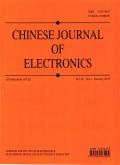对抗图像隐写的显著性映射构造
IF 3
4区 计算机科学
Q3 ENGINEERING, ELECTRICAL & ELECTRONIC
引用次数: 0
摘要
对抗性图像隐写可以欺骗基于卷积神经网络(CNN)的目标隐写分析器,从而提高安全性能。尽管现有的作品已经取得了巨大的成功,但仍然有一些限制,使其难以利用其潜力,包括从候选隐写子中选择最终隐写子不能完美地帮助他们欺骗目标隐写分析器的问题。由于梯度和嵌入成本之间的权衡还没有得到彻底的研究,这可能会简化更有效方法的设计。在本文中,我们设计了一个新的模型,利用这种权衡来对封面中的每个图像元素进行评分,并构造了一个显著性图来表示图像的分数。在此基础上,提出了一种简单有效的方案——SAL。它根据分数的幅度从地图中选择元素,并根据相应的梯度符号更新它们的成本。最后,利用新的代价完成数据嵌入,生成一个对抗隐去。大量的实验表明,在空间和JPEG域的不同目标cnn隐写分析器下,SAL可以比最先进的方法获得更好的安全性能。本文章由计算机程序翻译,如有差异,请以英文原文为准。
Saliency Map Construction for Adversarial Image Steganography
Adversarial image steganography can fool the targeted convolutional neural network (CNN)-based steg-analyzers, thereby improving the security performance. Despite the fact that existing works have achieved great success, there are still some limitations that make it difficult to exploit their potentiality, including the issue that selecting a final stego from the candidate stegos cannot perfectly help them fool the targeted steganalyzers. Since the trade-off between gradient and embedding cost has not been thoroughly investigated, this may simplify the design of more effective methods. In this article, we design a new model to score each image element in a cover by utilizing this trade-off, and a saliency map is constructed to represent the scores of the image. Based on the above, a simple and efficient scheme called SAL is presented. It selects the elements from the map according to the amplitudes of the scores, and their costs are updated based on the signs of the corresponding gradients. Finally, data embedding is accomplished with the new costs to generate an adversarial stego. Extensive experiments illustrate that SAL can achieve better security performance than state-of-the-art methods under different targeted CNN-based steganalyzers in both spatial and JPEG domains.
求助全文
通过发布文献求助,成功后即可免费获取论文全文。
去求助
来源期刊

Chinese Journal of Electronics
工程技术-工程:电子与电气
CiteScore
3.70
自引率
16.70%
发文量
342
审稿时长
12.0 months
期刊介绍:
CJE focuses on the emerging fields of electronics, publishing innovative and transformative research papers. Most of the papers published in CJE are from universities and research institutes, presenting their innovative research results. Both theoretical and practical contributions are encouraged, and original research papers reporting novel solutions to the hot topics in electronics are strongly recommended.
 求助内容:
求助内容: 应助结果提醒方式:
应助结果提醒方式:


